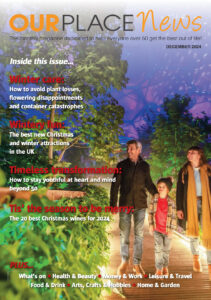From a celebrated symbol of US popular culture to one of its most dramatic natural wonders, we hit Route 66 heading for the Grand Canyon.
 Choice reports that Northern Arizona is where nature meets neon. Standing on the rim of the Grand Canyon is like looking over the edge of the world, but that dizzy precipice is not far from another world – the jukeboxes and vintage Cadillacs of Historic Route 66.
Choice reports that Northern Arizona is where nature meets neon. Standing on the rim of the Grand Canyon is like looking over the edge of the world, but that dizzy precipice is not far from another world – the jukeboxes and vintage Cadillacs of Historic Route 66.
Nature wins hands down, of course, but when you’ve spent the day marvelling at the Canyon, the Painted Desert, Monument Valley or the Red Rocks of Sedona – all thousands of years old – you can travel just a few years back to the 20th century in Route 66 towns like Williams, Flagstaff and Winslow.
Lit by the vivid red, pink, blue and yellow neon signs, the old cars with their bulbous bonnets or sharp rear fins sit outside diners where you expect to see The Fonz make an entrance at any moment.
Route 66 figured in much of the USA’s 20th century history. It was once the principal east to west road link running from the Californian coast to Chicago. As such, the little towns on the way flourished as they provided food, fuel and motel beds for travellers.
The route was soon described as Main Street America for this reason. John Steinbeck dubbed it the ‘mother road’ in his 1939 classic The Grapes of Wrath. It was the desperate route used by thousands of families ruined in the dust bowls of the Midwest seeking work in California, usually unsuccessfully.
Steinbeck wrote: “… and they come into 66 from the tributary side roads, from the wagon tracks and the rutted country roads, 66 is the mother road, the road of flight.”
In the Sixties, Route 66 entered rock culture. Bobby Troup wrote the song Get Your Kicks On Route 66 in 1946 but it became a standard when artists like Chuck Berry and the Rolling Stones covered it in the Sixties.
Peter Fonda and Dennis Hopper were shown riding through Flagstaff in the 1969 film Easy Rider, and The Eagles’ first hit, Take It Easy, written by Jackson Browne, featured the line “standing on a corner in Winslow, Arizona.” Winslow has taken full advantage of this by placing a statue of a man with a guitar on a corner, which is now a regular photo-stop for tourists.
(Story source: Choice)

